Shh! Detroit’s little-known success story: Its parks are getting better
No matter how well-preserved certain neighborhoods remained through the decades of Detroit’s decline, residents could always gauge the city’s overall troubles by the condition of their local park.
Balduck Park, for example, was such a year-round hive of activity on the comfortable far east side that it popped up in “Pagan Babies,” the 2000 novel by Elmore Leonard. “You remember Balduck Park and the hill?” one character asks another. “Used to be full of sleds and toboggans in the winter? You and I were in a fight there one time.”
Like many Detroit parks, Balduck began a slow downward spiral in the 1970s, when the city, cash-starved even then, started cutting back on mowing, and the grass grew so long it could stop hard-hit softballs.
The backstops gradually rusted and the benches fell apart; workers boarded up the recreation building and dismantled the rotting toboggan slides. The archery range, tennis courts and sprawling ice rink ‒ a low-lying portion of the park that was simply flooded by a fire hydrant ‒ disappeared. City workers departed. The body of a prostitute, stabbed multiple times by a member of a skinhead gang, was discovered in the park in 1988.
Aspects of Balduck’s unhappy decline were repeated across the city’s more than 300 parks and playfields, the most notable being Belle Isle, which faded in full view of the region, the state and even the world.
Today, though, Balduck is unrecognizable, in a good way. It has emerged as one of the stars of Detroit’s park system, receiving $2.7 million in upgrades from city and private sources in the past year.
Even more promising are signs of a renaissance across many of the city’s 307 parks, the result of millions of dollars in bankruptcy money flowing into the park system, which has, among other things, allowed the administration of Mayor Mike Duggan to more than triple the number of workers tending parks. Other factors are also at work, from growing corporate support to a collection of volunteer park lovers adopting green space in Detroit neighborhoods and caring for parks that the city still is not able to reach.
Even with more money and extra help, however, city officials are quietly closing some parks, mostly in inner-city neighborhoods, a practice that began under previous mayors. Duggan officials are touchy about the shutdowns; the city refused to make public to Bridge its most current list of decommissioned parks.
Still, in most parks, workers are cutting grass and picking up trash on a regular basis. That might be a basic function in most cities, but it’s a huge step forward in Detroit, given the neglect of recent years. They are also painting equipment and making other improvements, and usage appears to be growing.
Fixing up the parks hasn’t received as much promotion from the Duggan administration as the oft-touted repair of streetlights, auctioning of vacant homes and what the mayor says is a reduction in emergency response times. But park-watchers have noticed.
“We’re seeing more improvements in parks than we have in the past five years,” said Joe Rashid, president of the Detroit Parks Coalition, an advocacy group.
Todd Scott, executive director of the Detroit Greenways Coalition, which pushes for recreational paths for biking and walking, said: “In general, I hear almost nothing but positive” comments concerning Detroit parks.
In Rouge Park, the city’s biggest ‒ bigger even than Belle Isle and New York City’s Central Park – ballplayers, swimmers and model airplane hobbyists share nearly 1,200 acres with deer, herons, owls, wild turkeys, the Rouge River and tall native prairie grass that turns a golden color and creates a striking contrast where it bumps against the lush green woods.
“Things are really looking up for Rouge Park,” said Sally Petrella, president of Friends of Rouge Park. Petrella said Rouge is scheduled to receive $500,000 in upgrades in the coming months.
“Things have changed quite a bit, especially when it comes to maintenance and safety,” she said.
Scruffy around the edges
In addition to performing basic maintenance, the city is making capital improvements in selected parks. Next to Henry Ford High School in northwest Detroit, O’Hair Park is receiving $700,000 for soccer fields, playscapes, picnic shelters, a walkway, comfort station and parking lot.
Twelve parks, including some small playfields located deep in neighborhoods that are mostly on the edges of the city, have received smaller upgrades.
While it was impossible for Bridge to observe every park – WDET-FM Detroit Public Radio 101.9 FM, a Bridge partner in the Detroit Journalism Cooperative, is attempting to do that in its crowd-sourced Detroit Parks Watch – Bridge visited some 25 parks and saw considerable evidence that after many decades of inattention due to money woes and mismanagement, Detroit is paying attention to its parks like it hasn’t in years.
Conditions are far from what many suburbanites – or residents of other big cities – are accustomed to enjoying. Many parks, while relatively clean and freshly mowed, still show signs of being part of a city that only recently emerged from bankruptcy. Fences are often rusty and broken; play equipment can be old and weathered, and not all the swing sets have a full set of swings. The edges of parks are often overgrown.
Brad Dick, director of the city’s Department of General Services, which builds and maintains the parks, is cautious in characterizing the progress.
“I’m not saying every park is going to look perfect all of the time because the trash is hard to control,” he said recently. “This spring has been tough,” with all the rain. “But we’re doing pretty good overall.”
And it’s not just the city that is stepping up. A remarkable collection of companies, neighborhood groups, nonprofits, churches and private schools spend money and pitch in on a daily basis to maintain Detroit’s parks.
Of the city’s 307 parks, 75 have been adopted by outside groups, Dick said. Half of the 75 are maintained solely by the adoptee, with various levels of success. For the other half, the city helps out to an extent, usually with garbage pickup.
The Greening of Detroit, the tree-planting nonprofit, looks after 20 parks. Southfield-based Lear Corporation alone has donated more than $5 million over the past five years for major improvements at six parks, including $2 million in repairs for two Olympic-sized swimming pools at Rouge Park.
Lear even founded the Motor City Grounds Crew, and pays its workers. The Crew, a nonprofit, maintains the parks Lear has adopted and helps city groups do neighborhood clean-ups. Among its equipment is a 16-foot GMC diesel truck.
“Our parks get mowed every 10 days,” said Lear’s Barney Theisen.
The Motor City Grounds Crew is not to be confused with the Detroit Mower Gang, a volunteer group that also cuts lawns at various neglected parks.
Taking over from the city
Volunteers also run some parks the city abandoned over the years.
Szafraniec Park is a highly polished jewel with fresh paint, neatly trimmed grass and a modern playscape next to St. Francis D’Assisi Catholic Church and the Hope of Detroit Academy, northeast of Livernois and Michigan on the city’s west side. The city owns the park, but the school adopted it, and one employee, Jeff Stanton, maintains it.
“The park was not cared for,” said Tom Rys, a Hope of Detroit board member. “The city just didn’t have the funds. We’re trying to raise funds to keep it going.”
Not far from Szafraniec Park, on Junction Avenue, is St. Hedwig Park, with basketball courts and baseball fields. The city stopped caring for the park in 2005, according to Ismael Ledesma, president of the St. Hedwig Park Coalition, a nonprofit organization that operates the park. On a recent Sunday morning, Ledesma picked up trash while Juan Carlos Sanchez, the baseball coach at Western International High School, drove a small tractor that pulled a metal grate to smooth out the dirt infield in preparation for Mexican League youth games that day.
“We drag the diamonds every day,” Ledesma said proudly.
Doubling the budget
At Balduck, located near the intersection of Mack and Warren avenues a few blocks from St. John Hospital, there are new playscapes, a soccer field, dog run, walking path and zip line for kids. A two-person crew manicures the dirt infields and makes the grass look like a fairway.
“The park is in great shape,” said Terry Brennan of Eagle Sports Club, a nonprofit based in nearby Grosse Pointe that sponsors baseball and other activities for 1,800 children at Balduck. “The city has done a phenomenal job of maintaining it. For all the struggles that city has been through, the amount of cooperation is at an all-time high. It’s stunning, like the glory days.”
The UAW-Ford spent $1.8 million on a small baseball stadium that opened last summer at Balduck’s southern end. It includes lights, scoreboard, enhanced drainage and batting and pitching cages. At the north end of the park, the city has installed a stark new restroom that is self-composting, unisex, doorless and highly resistant to vandalism and scrapping. Designed by Dick’s department, it is the prototype for bathrooms in other parks.
Read “Bittersweet relief in city’s doorless restrooms”
The main reasons for the resurgence in parks, according to Dick, is Duggan’s belief that good parks stabilize neighborhoods.
Dick said Duggan gave his department $10 million in funds from the bankruptcy case’s plan of adjustment, and a budget that has more than doubled since before bankruptcy.
“We went from being able to hire 70 seasonal workers, that worked from April to October, to hiring around 230,” Dick said. “So we now have the amount of people we need to take care of the parks.”
And with the state of Michigan taking over Belle Isle (which is undergoing a more well-publicized transformation), the city saves some $2 million a year on maintenance that can go to other parks.
Ghost parks
In a city of fewer than 700,000 residents, with vast areas of vacant land, Duggan and Dick have the challenge of maintaining a park system that was built for a population of two million.
Given the loss of population, are there too many parks in Detroit?
Said Dick: “Yes, there are too many parks but, yes, there aren’t enough parks in some areas where we need more parks. So what our plan is, we’re updating the strategic master plan for parks, and right now we have about a half dozen areas of the city that are underserved.”
Those areas, according to Dick and Recreation Department Director Alicia Bradford, include southwest Detroit, Boston-Edison, Woodbridge and East English Village.
In 2013, then-Mayor Dave Bing ignited a furor when he announced the city would close 50 parks because of budget problems. Bing backed off that plan, but under Bing and previous mayors, the city stopped maintaining some parks, in addition to cutting back on maintenance to all of them.
Under Duggan, Dick said, the city is continuing to decommission parks ‒ which means stripping them of their play equipment and turning them into vacant lots. Unlike Bing, Duggan is not making any announcements. The city hopes few people notice, least of all families who decades ago might have donated land for a park.
Dick refused to make public a list of ghost parks or parks on death row, or discuss them at length.
“I don’t think it’s necessary and you wouldn’t even know it’s a park unless you went out there and looked at it,” Dick said. “For right now, we’re going to do it kind of quietly.”
Dick said about 30 of the city’s 307 parks “just aren’t a park any more,” adding, “they are in areas of the city that haven’t had people living in them in a long time. We maintain them on a very minimal basis, like cut them a few times a year, just to cut the weeds down. Some of these parks you’ll drive by and you’ll think it’s a vacant lot. It was a park back in 1955.”
Though the city would not release a park decommission list to Bridge, a draft of a map from Dick’s department listing more than 60 ghost parks that are either decommissioned or on their way to being decommissioned has circulated among Detroit’s park observers. The department sent the map to the Detroit Greenways Coalition so it could share with individuals and groups working to create green spaces in the city. Most of the parks are small playfields that had basic playground equipment, and most are located in central-city neighborhoods that have suffered significant population loss.
Four of them are within a short drive of each other on the west side, near Livernois and I-94.
One was the Bieniek Park, at Braden and Kirkwood. It’s now an overgrown plot of weeds and long grass whose only remnant from its park years is the concrete base of a flag pole.
At McGraw and Northfield are the Atkinson and Kronk playfields, adjacent to the abandoned Kronk Recreation Center, the famous boxing incubator. All that remain are a decrepit swing set, without swings, and an abandoned ball field. Bradford, the recreation chief, said her department is considering what to do with them.
The fourth nearby ghost park is Dingeman Playground, an overgrown field that sits, incongruously, next to Munger Elementary and Middle School, a shiny $22.2 million complex that opened in 2012. On a recent morning, Dingeman had one solitary user on its 15 acres, Robert Corona, a retiree who was jogging on the net-less tennis court, which was choked with weeds and sprinkled with glass.
“This is so sad,” Corona said. “They used to play baseball and soccer on this field.”
The city sold Dingeman to the Detroit Public Schools several years ago. A spokeswoman said DPS is determining what to do with the site, and vows to maintain the park until the decision is made.
In Midtown, one of the fastest-growing areas in Detroit and a neighborhood with little park space, the city has sold two-acre Stone Park to DTE Energy for an undisclosed amount. Stone, at W. Forest and the John Lodge Service Drive, is mainly a children’s playground that was renovated by the Greening of Detroit. A plan to build an apartment building on the site fell through. A DTE spokesman said the company has not decided how it will use the space.
Residents are looking for more
Dick said the city uses data-driven research as it plans for new parks or renovates old ones so they serve the areas with the most residents, especially children.
On the drawing board, according to Dick and Bradford, is a new park on the site of the demolished Higgins Elementary near Woodmere Park in southwest Detroit. Bradford said her department is working on a park aimed at senior citizens.
Dick said they might even bring back the skating rink at Balduck, which in its heyday was big enough to handle a couple of pickup hockey and tag games – called “pom-pom” ‒ plus general skating.
Now that the maintenance is approaching what passes for normal in major American city parks, observers and park users are looking for the city to bring its services up to the next level.
Rashid, of the Detroit Parks Coalition, said his group used to spend much of its time “just advocating to get the grass mowed.”
He added: “Now that that’s done, now that people see their park is maintained, they want more.”
At 29-acre Stoepel Park No. 1 on West Outer Drive in the Grandmont-Rosedale neighborhood, Debbie Kent and Ron Parker took a break from their tennis game one sunny day recently and talked about their wishes for their park, where they have played for more than 30 years.
They noted how the city and a number of organizations and companies had financed improvements at Stoepel in recent years. They also recalled that tennis players for years had brought clippers and weed whackers to maintain the tennis courts when the city wasn’t able to do the work itself. But even today, more than half of the tennis courts are unusable.
Parker, who is a tennis instructor, said: “This is one of the better parks in the city, and they’re starting to do a lot better job in cutting the grass, trying to maintain the park. They’ve got a lot more trash cans out. They pick up the trash pretty much on a regular basis.
“But back in its heyday – we had a water fountain here, we had lights. I’d like to see those things come back. I’d like to have a junior tennis league here, but we can’t do it now with the courts like this.”
“There’s a huge tax base in Rosedale Park. We’re paying high taxes. We need some help from the city, or it’s a losing cause.”
Petrella, president of Friends of the Rouge, said she expects Duggan to follow through on his promises.
She said: “I was so excited when Mayor Duggan came to our end of the city and went on about how important parks are. It’s been a long time since we’ve had a mayor that recognizes the value of parks and doesn’t see them as just a resource that they don’t have the resources for. You get skeptical about things like that, but when he goes on and on about parks and understands that parks will bring the city up and that having parks will brings more residents back in. And that he doesn’t want to shut down parks. And I love that.”
See what new members are saying about why they donated to Bridge Michigan:
- “In order for this information to be accurate and unbiased it must be underwritten by its readers, not by special interests.” - Larry S.
- “Not many other media sources report on the topics Bridge does.” - Susan B.
- “Your journalism is outstanding and rare these days.” - Mark S.
If you want to ensure the future of nonpartisan, nonprofit Michigan journalism, please become a member today. You, too, will be asked why you donated and maybe we'll feature your quote next time!


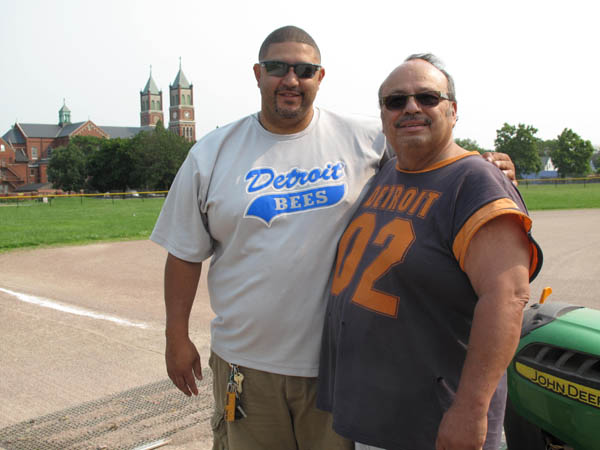 Juan Carlos Sanchez, left, and Ismael Ledesma maintain St. Hedwig Park in southwest Detroit. (Bridge photo by Bill McGraw)
Juan Carlos Sanchez, left, and Ismael Ledesma maintain St. Hedwig Park in southwest Detroit. (Bridge photo by Bill McGraw)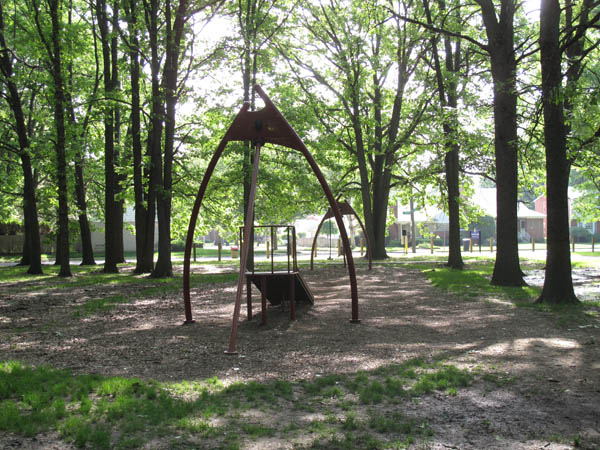 The children's zip line at Balduck Park is one of several improvements that have turned Balduck into one of the jewels of Detroit's park system. (Bridge photo by Bill McGraw)
The children's zip line at Balduck Park is one of several improvements that have turned Balduck into one of the jewels of Detroit's park system. (Bridge photo by Bill McGraw)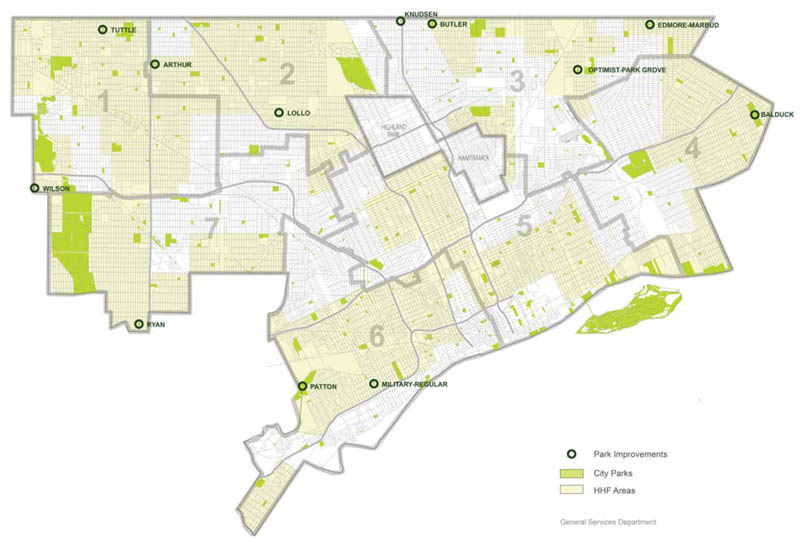 REJUVENATED PARKS: Twelve parks that are receiving upgrades from funds from the city of Detroit's bankruptcy case. (click to enlarge)
REJUVENATED PARKS: Twelve parks that are receiving upgrades from funds from the city of Detroit's bankruptcy case. (click to enlarge)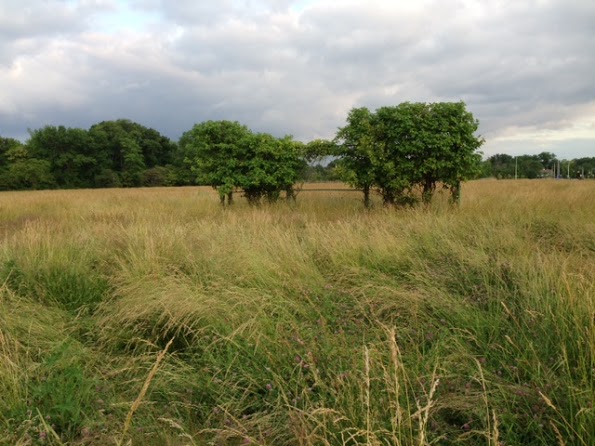 Nature re-asserting itself on an old baseball field at Rouge Park.
Nature re-asserting itself on an old baseball field at Rouge Park.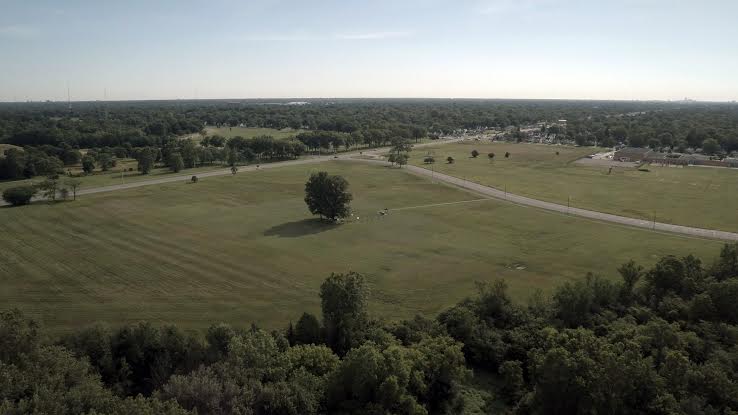 A panoramic view of the Areo Modelers field at Rouge Park, where the aircraft ranges from World War II-era models to 21st Century drones. (Bridge photo by Millard Berry)
A panoramic view of the Areo Modelers field at Rouge Park, where the aircraft ranges from World War II-era models to 21st Century drones. (Bridge photo by Millard Berry)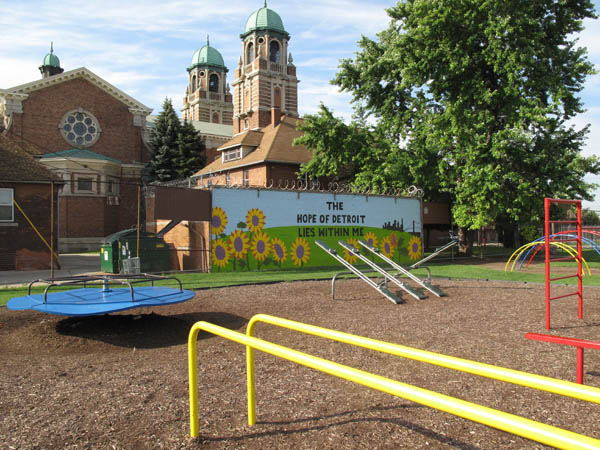 A spick-and-span Szafraniec Park, owned by the city of Detroit and maintained by the Hope of Detroit Academy, sits behind St. Francis d'Assisi Church, on Buchanan and Wesson.
A spick-and-span Szafraniec Park, owned by the city of Detroit and maintained by the Hope of Detroit Academy, sits behind St. Francis d'Assisi Church, on Buchanan and Wesson.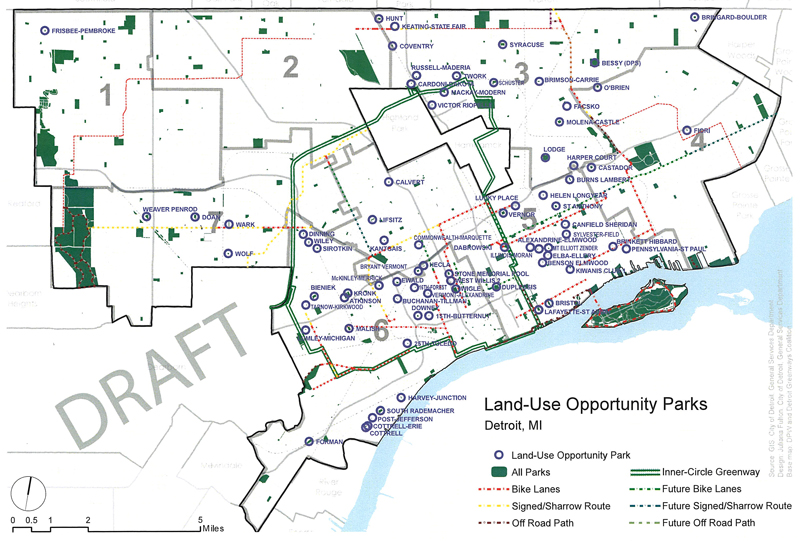 DETROIT'S GHOST PARKS: A map produced by the city of Detroit's General Services Department, whose circles show parks that have been, or are being, decommissioned. (click to enlarge)
DETROIT'S GHOST PARKS: A map produced by the city of Detroit's General Services Department, whose circles show parks that have been, or are being, decommissioned. (click to enlarge)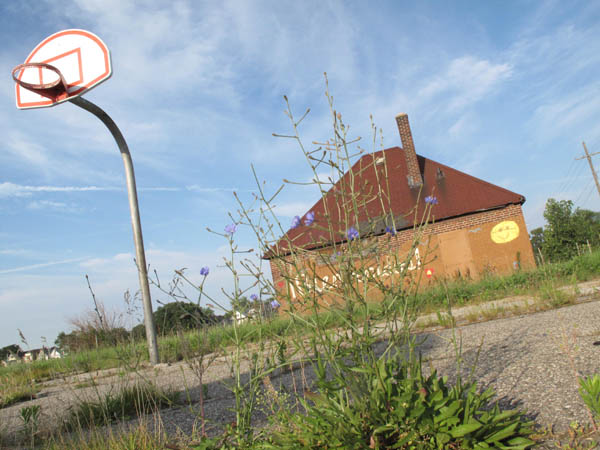 Dingeman Park, next to the new Munger School, is overgrown and rundown. The park is owned by the Detroit Public Schools.
Dingeman Park, next to the new Munger School, is overgrown and rundown. The park is owned by the Detroit Public Schools.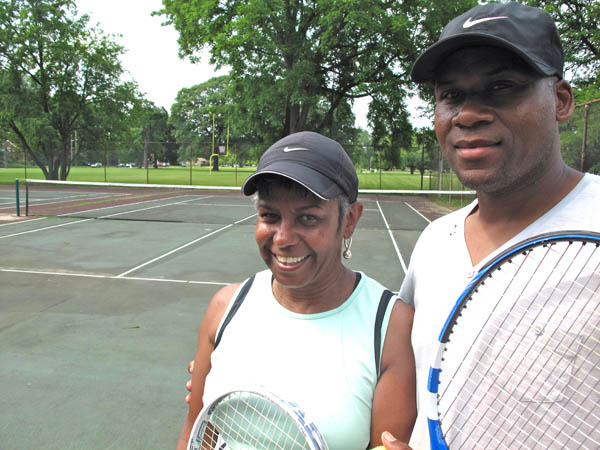 Debbie Kent and Ronald Parker have been playing tennis for 30 years at Stoepel Park No. 1 on Detroit's west side. (Bridge photo by Bill McGraw)
Debbie Kent and Ronald Parker have been playing tennis for 30 years at Stoepel Park No. 1 on Detroit's west side. (Bridge photo by Bill McGraw)